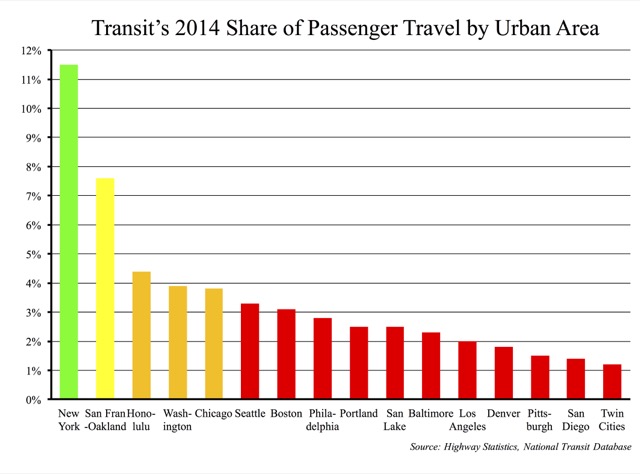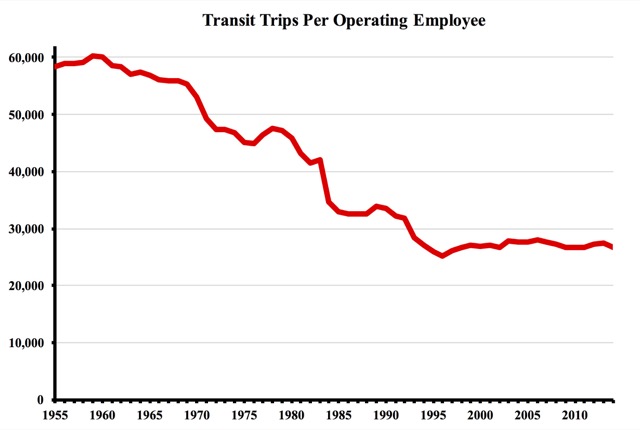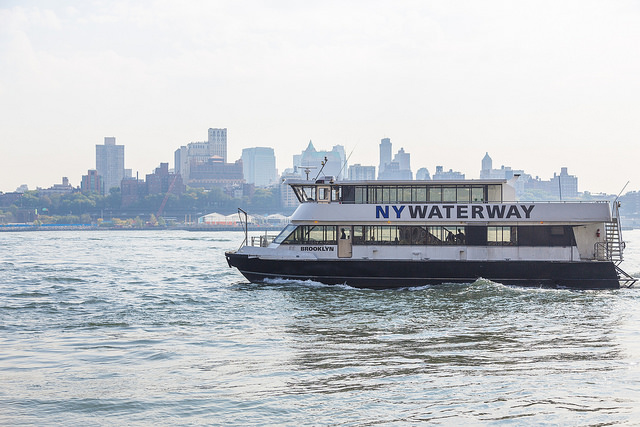“Ford is going to be mass-producing vehicles with full autonomy” by 2021, Ford CEO Mark Fields vowed last August. “That means there’s going to be no steering wheel, there’s not going to be a gas pedal, there’s not going to be a brake pedal, and of course, a driver is not going to be required.” These vehicles will not be for sale, at least immediately, but will be used “in a ride hailing or ride sharing service.”
And that means the end of mass transit, especially if–as RethinkX projects–shared driverless car services will cost far less than owning a car (meaning far less than 40 cents a mile, which is what Americans currently spend buying, operating, maintaining, and insuring cars). It also means an end to most congestion, even for people in human-driven cars, as new research finds that congestion will begin to decline when as few as 5 percent of cars on the road are autonomous. Continue reading










